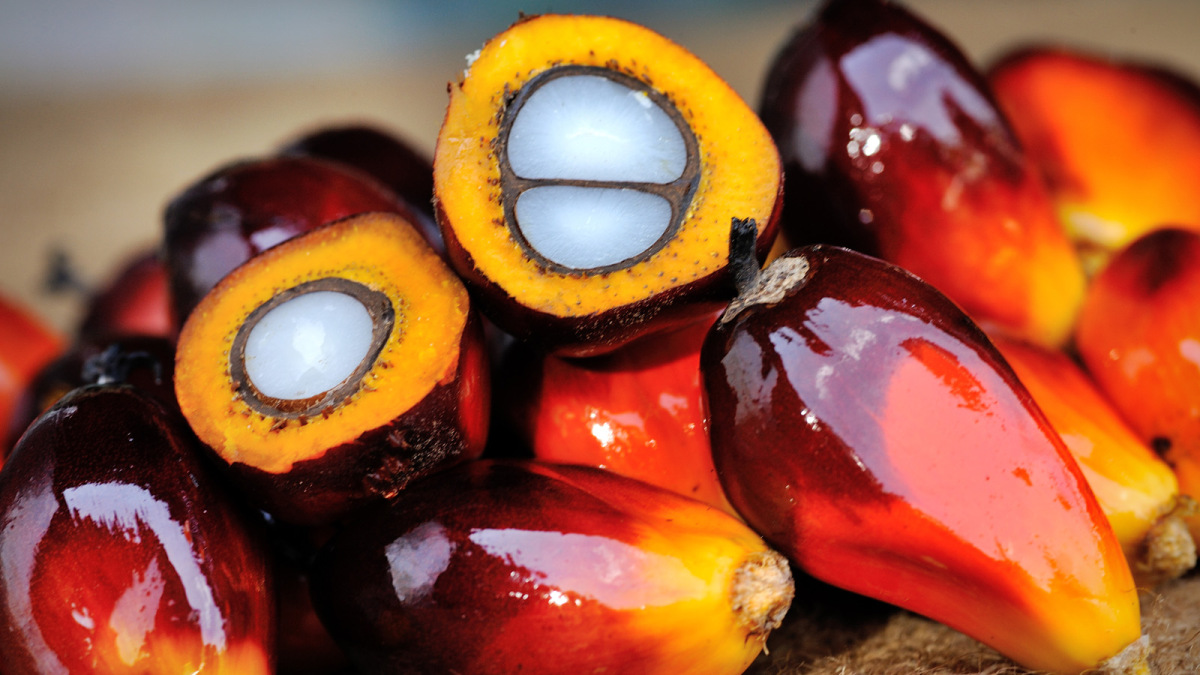[Image Source: Grist]
16 Aug 2018 — A new study forecasts a rise in oil palm plantations across Africa as the global demand for the commodity continues to grow. But the continent must learn lessons from key growing regions in Southeast Asia to lessen the environmental impact of the industry and its potential effect on primates.
The African continent offers the low-lying tropical ecosystems oil palm prefers, hence an opportunity for businesses and local farmers to generate income.
However, the lessons learned from Southeast Asia, where most oil palm plantations are located, has prompted an international team to assess the potential impact on primates of an expansion in oil palm cultivation in Africa.
Companies growing palm oil are looking to expand into Africa prompting concern from conservationists. Currently, the majority of the world’s palm oil is produced in Indonesia and Malaysia.
Although growing palm trees requires less land and resources than traditional vegetable oils, the cultivation of palm oil is a primary cause of tropical deforestation, particularly in these countries. Palm oil plantations replaced 2.7 million hectares of tropical forest between 1990 and 2005, leading to a loss of biodiversity and an increase in greenhouse gas emissions.
The new study – which examines palm oils potential effects on Africa’s biodiversity – closely follows global investors calling for stronger standards from the Roundtable on Sustainable Palm Oil (RSPO). More than 90 institutional investors representing more than US$6.7 trillion in assets have called on the RSPO to strengthen its standards for certifying the sustainable production of palm oil.
One way that consumers can help is to choose sustainably-grown palm oil products, say the researchers.
In the study from CIRAD – Agricultural Research for Development, the researchers set out to identify “areas of compromise” in which oil palm cultivation would be most productive while having little impact on primates. They concluded that such areas were rare across Africa, covering only 0.13 to 3.3 million hectares (Mha).
There are only 3.3 million hectares available with little impact on primates. In total, according to the study, 273 Mha of land could be planted with oil palm in Africa: 84 Mha with low yields, 139 Mha with average yields and just 50 Mha with high yields, because of local soil and climate criteria and assuming crops are solely rain-fed with intermediate use of inputs.
“If we combine these figures with the data on primate vulnerability, oil palm could only be grown with little impact on primates on 3.3 Mha. That figure drops to 0.13 Mha if we only consider high-potential land,” says Ghislain Vieilledent, CIRAD ecologist and co-author of the study.
Those figures of 3.3 Mha and 0.13 Mha correspond to just 6.2 percent and 0.2 percent respectively of the demand for additional land by 2050, given that 53 Mha of additional land is forecast to be needed by then.
There may be mitigation strategies, but the impact remains high.
“One potential mitigation strategy would be to identify alternative trajectories for agricultural expansion, using ‘smart’ criteria to minimize and delay the loss of primate home range as much as possible,” says Vieilledent.
FoodIngredientsFirst has been closely following the journey of many major suppliers of palm oil in their bids to create a sustainable supply chain and eliminate some of the controversial practices that have been associated with it such as child labor and its negative environmental impact.
Palm oil, how it is sourced, where it comes from and the farmers and small communities of grower countries have been heavily scrutinized in recent years as industry steps up efforts to clean up the supply chain. There is also significant pressure from non-government organizations and environmental groups like Greenpeace which continually investigate the palm oil supply chain.
Alongside increasing consumer awareness about the major issues of palm oil, this has led to many companies committing to only using “deforestation-free” palm oil products – those made exclusively using palm oil from plantations that have not cleared forests.
However, another study from Imperial College London in May claimed that genuinely “deforestation-free” palm oil products are problematic to guarantee and a more collaborative and supportive approach to understanding palm oil supply chains are needed so more effective strategies can be developed.
And in June, Roundtable on Sustainable Palm Oil (RSPO) CEO, Datuk Darrel Webber warned against the unforeseen sustainability and biodiversity impacts that may come from switching to, what he calls, less sustainable edible oils than palm oil.
“The knee-jerk reaction is, ‘if this stuff is bad why not stop buying it,’ but of course, there are perverse incentives. You do this and that will incentivize something that is worse. More messages are coming out from academia and civil society saying that banning palm oil could lead to worse impacts than what we have now,” said Webber.
CIRAD research examines African palm oil expansion
The researchers compared two income-driven oil palm expansion scenarios and two conservation-driven scenarios. The income-driven scenarios would see the most productive and accessible land converted to oil palm cultivation first. In the conservation-driven scenarios, it is land with low carbon stocks and low primate vulnerability that would be converted first. The researchers showed that even in a scenario seeking to minimize the impact on primates, five species, on average, would lose one hectare of habitat for everyone hectare of land converted to oil palm cultivation.
“Levers for the successful conservation of African biodiversity do exist,” adds Vieilledent. “One way could be to increase yields in existing plantations by using high-quality seed and adopting better agricultural practices.”
Initiatives such as the RSPO should also be supported, with a strengthening of the environmental component of this certification.
Another possible solution lies in reducing future demand for palm oil in the northern hemisphere by raising consumer awareness and seeking alternatives to biodiesel. However, given the population growth expected across Africa over the next 30 years and the increased food consumption, the effects could be limited. There is already momentum for change and the researchers hope their findings will contribute to this.
The researchers focused on primates because they are a good indicator of overall biodiversity.
“There is a correlation between primate diversity and the richness of species in other taxonomic groups. They play an important role in seed dispersal and in maintaining the composition of forest ecosystems,” adds Vieilledent.
Populations of many primate species are in decline: 37 percent of primate species in mainland Africa and 87 percent of species in Madagascar are under threat of extinction according to International Union for Conservation of Nature (IUCN) criteria. In this study, the distribution of 193 African primate species was taken into account (at a resolution of 10 x 10km) along with their vulnerability (IUCN conservation status)
Source: TeleSur
*The views of the above article are those of the author and do not necessarily reflect the views of Africa Speaks 4 Africa or its editorial team.




